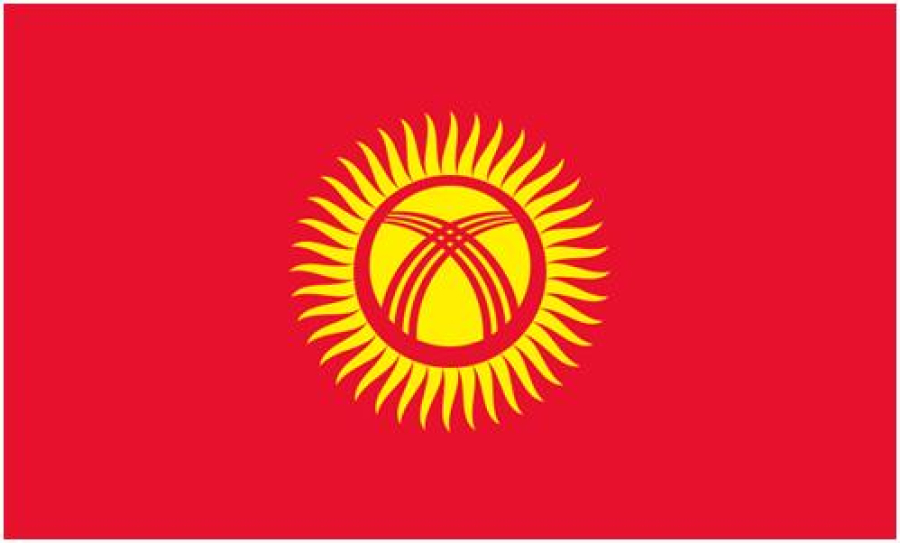Country: Kyrgyzstan
Area: 198,500 square kilometers
Capital: Bishkek
Population: Nearly 6 million
Major cities: Osh, Batken, Jalal-Abad, Naryn, Karakol, Tokmok, Balykchy
Official languages and scripts: Russian and Kyrgyz, Cyrillic script
The Kyrgyz language is a branch of the Central-Eastern Turkic languages. This language has three dialects: northern, eastern, and southwestern. The modern Kyrgyz literary language, which was developed during the Soviet era, is a combination of the characteristics of all Kyrgyz dialects. The vocabulary of the Kyrgyz language has Turkish and Mongolian roots, and there are also a number of Persian, Arabic, and Russian words in this language. The common script is Cyrillic, which has replaced the Latin script since 1940. Before that, the Arabic script was used until 1928, and from 1928 to 1940, the Latin script became common as an intermediary between Arabic and Cyrillic.

Population and its religious, ethnic and religious distribution:
The country's population is about 7 million people. About 72% of it is made up of Kyrgyz, 14% of it is Uzbek and 10% is Russian. Other small minorities such as 2.8% Ukrainians, 1.1% Germans and Tatars, Kazakhs, Azerbaijanis, Tajiks and Uyghurs also live in this country. The percentage of Muslims in the southern provinces such as Osh, Jalal-Abad and Batken is higher than in the northern provinces.
About 80% of the country's population is Hanafi Muslims, 15% are Orthodox Christians and the remaining 5% are of various religions or beliefs.
History of Kyrgyzstan:
The history of Kyrgyzstan dates back to 201 BC. Kyrgyz believe that the Kyrgyz people are descended from Turkic peoples. The Kyrgyz originally lived in the northeastern part of what is now Mongolia. They later migrated south and settled around the Yenisei River in southern Siberia, where they lived from the 6th to the 8th centuries. In the 12th century, Islam became the dominant religion in the region, and in the 13th century, the Kyrgyz migrated south with the rise of the Mongol Empire. In the 15th and 16th centuries, the Kyrgyz Republic was formed and continued to exist independently until the 19th century. In 1876, the territory was annexed by the Russian Empire, which led to some tensions and rebellions. During Russian rule, many Kyrgyz emigrated to China and Afghanistan.
In 1918, the Soviet Union was established in the region, and in 1924, Kyrgyzstan was recognized as part of the Kara-Kyrgyz Autonomous Oblast. In 1926, the name was changed to the Kyrgyz Autonomous Soviet Socialist Republic, and in 1936, it was recognized again as the Kyrgyz Soviet Socialist Republic (KSSR) and as part of the Union of Soviet Republics.
During the Soviet period, Kyrgyzstan developed economically and socially. In 1924, a new Arabic alphabet was adopted, which was later changed to Latin in 1928 and to Cyrillic (Russian) in 1941.
In June 1990, Kyrgyzstan was troubled by ethnic tensions between Kyrgyz and Uzbeks in the Osh region. That same year, the Kyrgyz Democratic Movement began to operate, and in October 1990, Asgar Agayev became president. In 1991, Kyrgyzstan seceded from the Soviet Union, and in 1993, the independent Kyrgyz Republic was declared.
During the 1990s and early 2000s, the country experienced political instability and free and democratic elections were not held.
Religious Education:
The Kyrgyz Islamic University, headed by Abdulshakur Narmatov, is the most prestigious university in this field. It is worth noting that this university is run under the supervision of the Mufti's Office. This university has chairs in the fields of law, language, and Islamic sciences and has 300 students and 34 professors. It is worth noting that other seminaries are also operating privately.
Political, social, and economic situation of religious minorities:
The largest religious minority after Muslims is Orthodox Christians, with 15% of the population, most of whom are of Russian descent. There are 2,044 officially registered religious groups in Kyrgyzstan, of which 309 are Christian organizations. The Kyrgyz Orthodox Church, which is located in the center of Bishkek, has implemented regular programs to spread Christianity. These activities include training missionaries and sending them to other centers under the church's care. It is noted that the government has not yet imposed any restrictions on their cultural and economic activities, and they are free to practice their religion. The country's Shiites, with a population of about 24,000, are Azeri immigrants who were forcibly relocated to these areas during the former Soviet era.
The number of Jews is estimated to be over 3,000, most of whom are engaged in economic activities. It is said that the level of Jewish influence among some government officials and decision-makers is high. Many of this minority migrated to Russia or occupied Palestine after the collapse of the Soviet Union.

